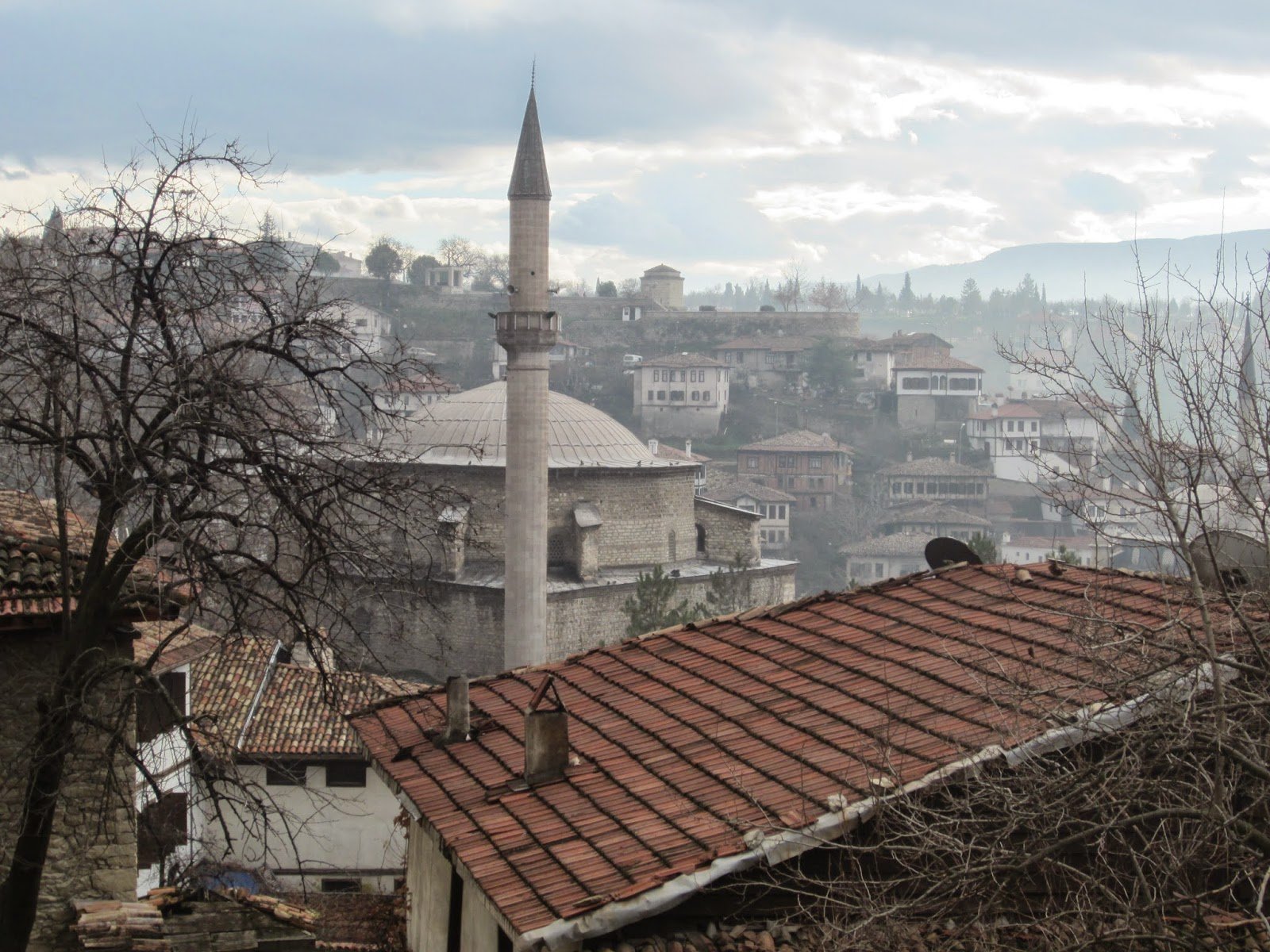Safranbolu
Safranbolu, a city named as an UNESCO World Heritage site in 1994 and about two and a half hour bus ride north of Ankara, Turkey, is a step back into the ancient Ottoman times of 1299–1490. Two new friends from Billkent University agreed to let me tag along at a last minute’s notice. With limited time and budget, following the flow of opportunities that easily present themselves, is my new modus operandi. Though it was the end of December, the weather was not too cold and two days in this small cavern of history was a good taste of time if not traveling with a geologist or historian. The backdrops of the Black Sea outcroppings against red-tiled roofed wooden buildings, marble mosques, and chunks of citrine quartz found while meandering on dirt paths, was a full course menu of adventure and enough as I could pleasantly consume.
A highlight of the excursion was the “golf cart tour” which lasted about one and a half hours and included ample freedom for jumping off and taking pictures. Creeping and bumping along 9’ wide stone paths up steep inclines between personal property and landmarks, we listened to ancient Turkish music and a female voice recording in English that was paused and rewinded as we backtracked certain routes that had suddenly become impassable.
Another highlight was the Cinci Hamam, though compared with the formidable Furdos in Budapest and ornate Hamams in Morocco, it didn’t compare. There are other similarities with places I have recently lived that tease my curiosity. Safranbolu reminds me somewhat of the valley near Volubious and Fes in Morocco, while the cavernous gorge reminds me of Southern Oregon. The red roof tops and grey stone cobble roads remind me of Szentendre near Budapest and the fresh hot homemade breads remind me of the bread made in the large outdoor brick ovens of the Habous in Casablanca. The abundance of small cafes butted up against a variety of personal businesses: hair salon, pharmacy, fruit stand, photocopy, iron maker, shoe cobbler, jeweler, and textile fabricators, reminds me of the small center village of Dar Bouazza. The deliciously spiced rice pilaf wafting smells of cardamon, raisins, lentils, and saffron reminded me of the sweet and pungent Moroccan pastille.
No matter how poor or simple everyone appeared, common curtesy was expressed to us every moment of our visit. There were no prying men or old begging handicap homeless old women with starving children. From an outsider’s perspective this appears to be a rare community that is taking care of its citizens and has a feeling of pride that shines. It will draw me back again I am sure.



